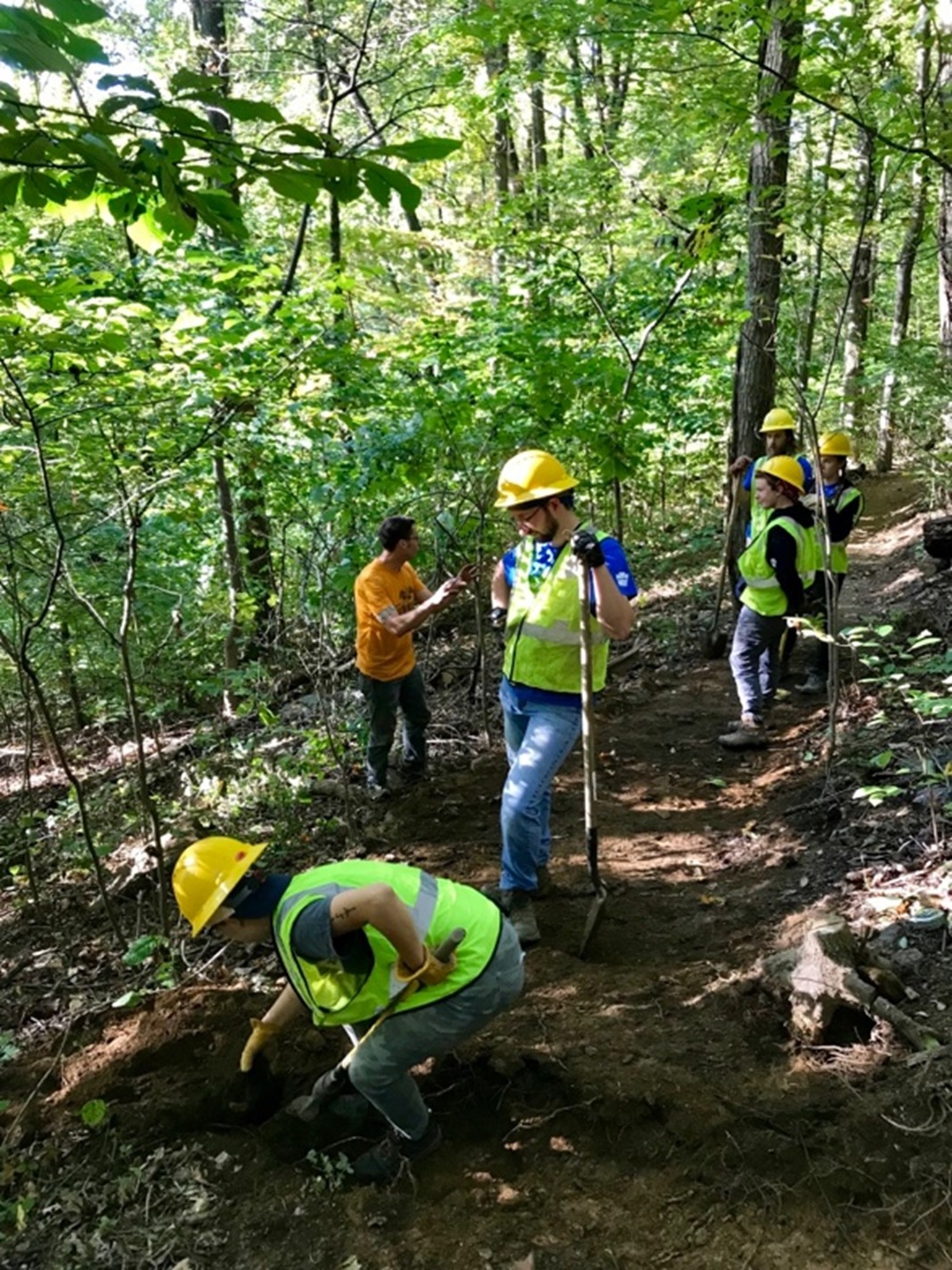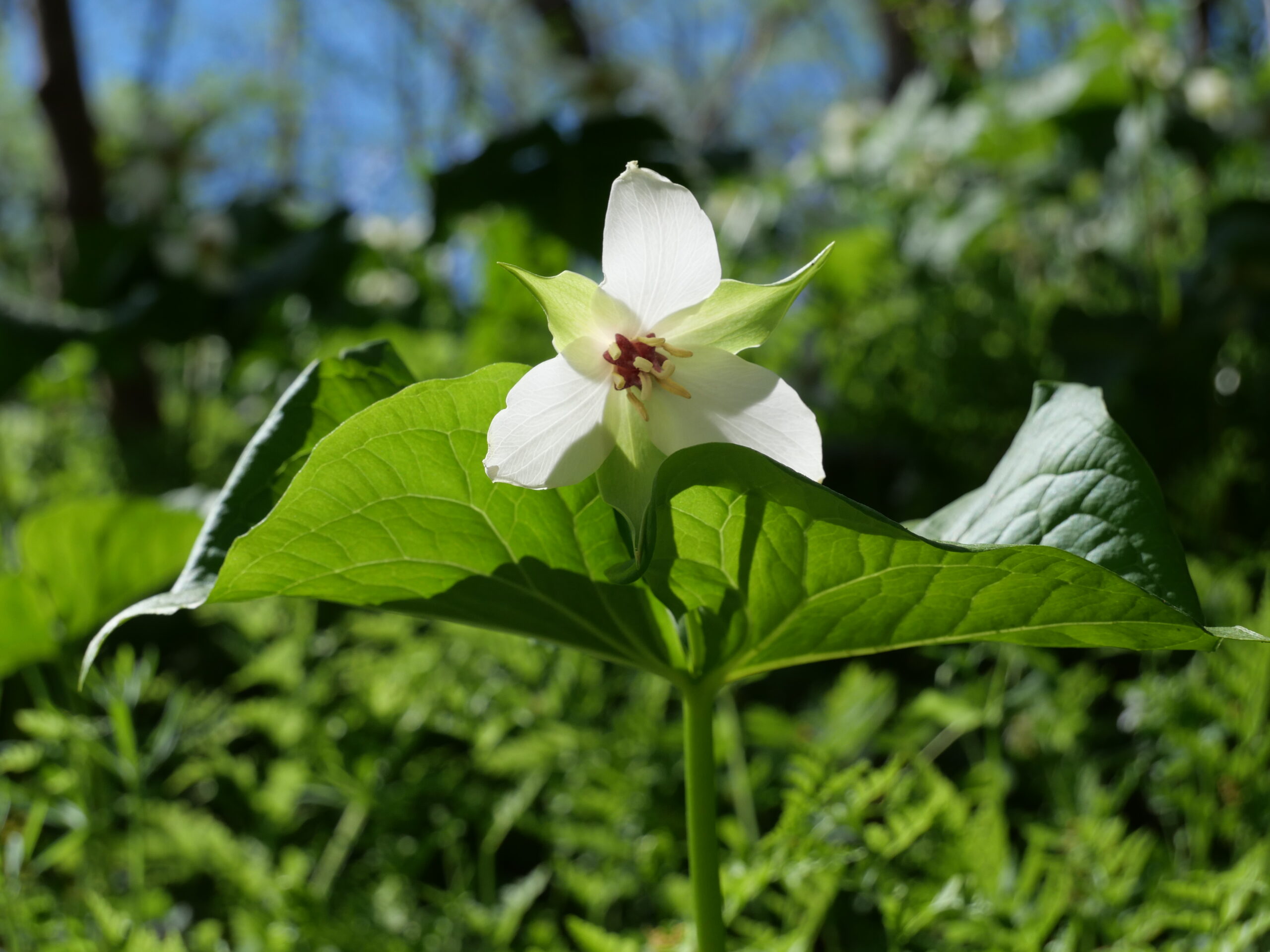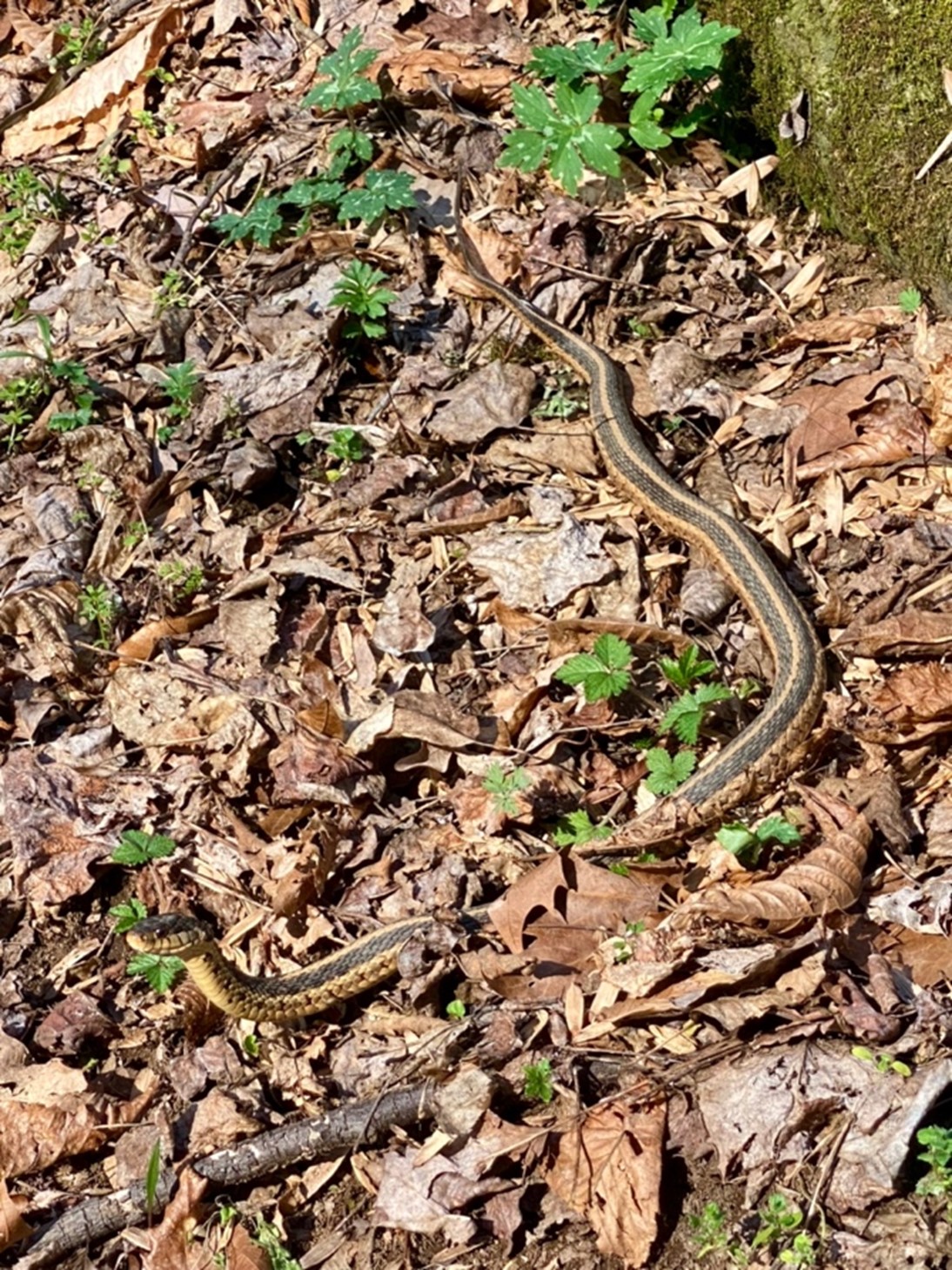By Kate Prisby, Interpretive Ranger
As a child, you may have been encouraged to be on your best behavior when visiting someone’s home. Likewise, when in nature, there are practices we can embody to make sure we’re being good guests of natural spaces. After all, the fish, birds, flowers, trees, bugs, and landscape are hosts just as worthy of our best behavior.
Leave No Trace is one way to ensure that our time outdoors has a minimal impact on the landscape. It’s a set of seven actions that each of us can take when heading outdoors to hike, picnic, bike, rock climb, walk the dog, geocache, practice plant and bird identification, fish, etc. As the weather beckons us outdoors, here are some best practices to keep in mind.
1. Plan Ahead and Prepare
A well-planned trip has a higher likelihood of being fun and safe. Before heading out, take some time to learn about the place you’re going. Check out maps online. Know the day’s weather and the terrain for where you’re going, then dress and plan appropriately. Rocky hikes are better for closed toe shoes; caving’s safer if you pack a headlamp (and a backup light source).
In the event something goes awry, having basic first aid supplies along is always a necessity, as is knowing how to use them. Depending on where you are, medical help may not be readily available, and cell phone service might be questionable. Carrying a physical map is best practice since cell phones can die or service may not exist. Lancaster Conservancy has information online about each of our preserves, and we encourage preserve visitors to peruse this information before heading outdoors.
2. Travel on Durable Surfaces
If you’re on the trail, you’re in the right spot. Durable surfaces are strong, resilient surfaces that won’t be harmed when they bear your weight. These include rocks, boardwalks, sand, gravel, and snowpack. Trails are designed to be durable, and stepping off them (to take a photo of flowers, to avoid a puddle in the trail, etc.) leads to erosion. One reason it’s good to keep dogs on leashes is to help ensure they remain on durable surfaces too.
If there’s a side trail you pass that isn’t on the map, it’s likely a social trail – one that resulted from a single person going off trail who, over time, was followed by others until the result was enough erosion that it looks like an intended trail. Stick to designated trails when exploring outdoor spaces.
What should you do if there’s a puddle on trail? Go through it! Trails widen when people go around the puddles instead of through them. If it’s rained before you head outside, venture out with the mindset that you may have some soggy feet or dirty shoes at the end of the day. It’s OK to get dirty while outside!
3. Dispose of Waste Properly
Imagine walking down a trail and seeing discarded orange peels and dog poop. Sure, both biodegrade over time, but neither one of them is left behind by the full-time residents of the landscape (trees, bugs, flowers, and critters). Any trash you (or your four-legged friend) create should be carried out of the woods with you. Carrying an extra plastic bag makes it easy to take your trash.
4. Leave What You Find
I’s ard o ee wat’s ot ere.
Huh?
“It’s hard to see what’s not there.” Take letters out of a sentence, and you miss the meaning. Take flowers, animals, or cultural relics off the land, and the landscape loses part of its story. By leaving what you find in nature, you leave it for the next person to marvel at. You also leave it for any other living things that depend on it. The box turtle eats the mayapple. The pollinators need the trillium’s nectar. When you take plants or animals home with you, they have a low chance of survival because they are no longer in the ecosystem they need to survive.
Take photos of what you see, but leave the actual object where you found it.
5. Use Fire Responsibly
This one is simple at Lancaster Conservancy preserves – fires aren’t allowed. If you’re at a Conservancy preserve, no fire is the right kind of fire.
If you’re somewhere else, do some research and see if fires are allowed. Bringing non-local firewood into an area is a great way to spread invasive species. Unattended fires are a major source of wildfires.
In general, if a fire isn’t necessary, don’t start one. If fire is needed, consider a camp stove.
6. Respect Wildlife
There’s a rule of thumb for observing wildlife: Hold your arm out in front of you, and extend your thumb. Close one eye and place your thumb in front of the wildlife you’re observing. If your thumb fully obscures the wildlife, you’re likely far enough away from it to not bother it. If your thumb doesn’t fully blot it out, you’re probably close enough to alter its behavior.
Never feed animals. The food humans eat frequently isn’t good for the digestive systems of animals; it can cause them harm and/or habituate them to be too close to people.
As for dogs, know the regulations of where you’re visiting. Keeping dogs on leash is a good practice to ensure your dog stays on trail, stays away from other wildlife (snakes, rabbits, etc.), and is under your control when passing others on trail. On Lancaster Conservancy preserves, dogs are required to be on leash.
7. Be Considerate of Other Visitors
Be kind and friendly to those you encounter outdoors.
If you’re listening to music, earbuds are best. This allows other visitors to hear nature. If you’re on a Lancaster Conservancy preserve, know that amplified music isn’t allowed because it can alter the behavior of animals (think of animals that call out to each other to warn of danger or during mating season).
If you’re picnicking or fishing with family, take your trash and food scraps home with you. Other visitors don’t want to see your trash.
Lancaster and York counties are rich with outdoor spaces to explore. The goal of Leave No Trace is to ensure that our time outdoors leaves wild spaces healthy so future generations can enjoy them too. LNT.org is a superb resource for any outdoor enthusiast, and it offers guidance on best practices for all kinds of outdoor activities including rock climbing, geocaching, birdwatching, and camping. Collectively, we can be good stewards of our shared lands so that they are here for us to enjoy now and long into the future.
Lancaster Conservancy’s efforts to provide Leave No Trace education to the community are made possible thanks to the generous support of the Lancaster County Solid Waste Management Authority.




